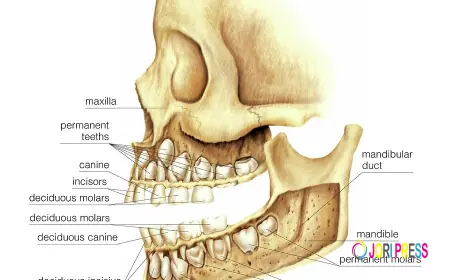How to Diagnose Enlarged Male Breasts in Islamabad
Understand how professionals diagnose enlarged male breasts in Islamabad and learn about medical exams, causes, and treatment options available.

Enlarged male breasts, a condition medically referred to as gynecomastia, is a concern many men face, particularly during puberty, middle age, or older adulthood. Identifying the cause and determining the correct treatment depends on a precise diagnosis. If you're struggling with Enlarged Male Breasts in Islamabad, you are not alone. This condition is more common than you might think, and with the right medical support, you can find relief and regain confidence.
In this article, we will walk through how medical professionals in Islamabad diagnose this condition, what symptoms you should be aware of, and the steps involved in confirming whether your chest enlargement is indeed gynecomastia or another condition.
Understanding the Condition
Before delving into the diagnostic process, it’s important to understand the nature of gynecomastia. This condition involves the enlargement of glandular breast tissue in males, typically due to hormonal imbalances. It is different from pseudogynecomastia, which involves fat accumulation without glandular proliferation.
Although gynecomastia is usually benign, it can be emotionally distressing and, in some cases, a sign of an underlying medical issue. Hence, proper diagnosis is critical for peace of mind and effective treatment.
Recognizing the Symptoms
Self-awareness is the first step toward diagnosis. If you experience one or more of the following symptoms, it's advisable to consult a healthcare professional:
-
Swollen breast gland tissue
-
Tenderness or pain in the breast area
-
Asymmetrical breast enlargement
-
A firm or rubbery mass under the nipple
-
Discharge from one or both nipples (rare)
These symptoms may vary from mild to severe. Often, gynecomastia presents itself gradually and can occur on one side (unilateral) or both sides (bilateral).
Initial Consultation with a Specialist
The diagnostic journey typically begins with a consultation at a specialized clinic. In Islamabad, cosmetic and surgical clinics offer comprehensive assessments. During the initial appointment, the physician will ask for a detailed medical history and conduct a physical examination.
Expect questions such as:
-
When did you first notice the breast enlargement?
-
Do you have any pain or discharge?
-
Are you on any medications or supplements?
-
Have you experienced weight fluctuations or hormonal issues?
This step is crucial in identifying whether further investigations are necessary or if lifestyle or medication changes could help.
Physical Examination
During the physical exam, the doctor will palpate the chest area to distinguish between glandular tissue and fatty deposits. Glandular tissue feels firm and rubbery, while fatty deposits feel soft.
This tactile differentiation helps to classify the condition as gynecomastia or pseudogynecomastia. In some cases, both types of tissues may coexist, which might require a combination of treatment strategies.
Laboratory Tests
To confirm the diagnosis and rule out underlying conditions, your doctor may recommend several blood tests, including:
-
Hormone levels: Testosterone, estrogen, prolactin, and luteinizing hormone
-
Liver function tests
-
Kidney function tests
-
Thyroid function tests
These tests help determine whether a hormonal imbalance, liver or kidney dysfunction, or thyroid issues are contributing to the condition.
Imaging Studies
If the physical exam and lab results are inconclusive or if a lump feels unusual, your doctor may order imaging tests. These can include:
-
Ultrasound: Helps identify whether the tissue is glandular or fatty and detect any abnormalities.
-
Mammogram: Though typically used for breast cancer screening in women, mammograms may be ordered in men if malignancy is suspected.
-
MRI or CT scans: In rare cases, to explore tumors or other complex conditions affecting hormone levels.
Imaging is particularly important if there are signs such as hard lumps, nipple retraction, skin dimpling, or bloody discharge, all of which could be red flags for male breast cancer.
Rule Out Other Conditions
The diagnosis of gynecomastia also involves excluding other conditions that can cause similar symptoms, such as:
-
Pseudogynecomastia: Caused by fat accumulation due to obesity.
-
Male breast cancer: Although rare, it can present similarly and must be ruled out.
-
Hormonal tumors: Tumors in the adrenal gland or testes can elevate estrogen levels.
-
Liver disease or cirrhosis: These can impact hormone metabolism.
-
Hyperthyroidism: Overactive thyroid can alter hormone levels leading to breast growth.
Doctors in Islamabad are well-equipped to identify and distinguish between these conditions using a combination of clinical and diagnostic tools.
Duration of the Diagnosis Process
The timeline for diagnosing enlarged male breasts varies based on the complexity of the case. A straightforward case with typical symptoms might be diagnosed within a few days, while more complex cases requiring imaging and hormonal assessments could take a week or longer.
Patients are encouraged to be patient and thorough during this process, as accurate diagnosis leads to more effective and lasting treatment outcomes.
When Is Surgery Recommended?
Not all cases of gynecomastia require surgery. Mild cases may resolve on their own, especially if caused by medication, drug use, or hormonal changes during puberty. However, surgery is recommended in the following cases:
-
Persistent gynecomastia beyond two years
-
Painful or tender breast tissue
-
Emotional or psychological distress
-
No improvement from medications or lifestyle changes
-
Asymmetrical or disfiguring breast appearance
Surgical options range from liposuction (to remove fat) to excision (to remove glandular tissue) or a combination of both.
Pre-Surgical Evaluation
If surgery is advised, patients must undergo a pre-surgical evaluation to ensure they are fit for the procedure. This typically includes:
-
Detailed medical history
-
Blood work
-
ECG or other cardiac evaluations
-
Anesthesia assessment
The surgeon will also photograph the chest for before-and-after comparisons, which helps assess treatment effectiveness.
Post-Diagnosis Support and Care
Upon diagnosis, clinics usually provide educational material, counseling, and support to help patients understand their condition and available treatment options.
Some clinics in Islamabad also offer pre-surgical counseling and follow-ups to ensure optimal recovery.
Why Early Diagnosis Matters
Delaying diagnosis can complicate treatment. In early stages, lifestyle modifications or medications may be sufficient. However, prolonged conditions often require surgical intervention.
Furthermore, early diagnosis helps address emotional concerns, such as low self-esteem or social withdrawal, which are common among men dealing with gynecomastia.
Cost Implications in Islamabad
While initial consultations are reasonably priced, full diagnostic evaluations involving blood tests and imaging can increase costs. However, most reputable clinics in Islamabad offer affordable packages and installment plans.
It is advisable to compare pricing and credentials when selecting a clinic. The reputation of the medical facility and the surgeon’s expertise are more critical than simply choosing the lowest price.
Choosing the Right Clinic
When seeking treatment for enlarged male breasts, ensure your clinic offers:
-
Board-certified plastic surgeons
-
Modern diagnostic and surgical equipment
-
Transparent pricing
-
Post-operative care and monitoring
A trusted option is Dynamic Clinic Islamabad, which offers comprehensive diagnostic and surgical services in a professional, patient-centered environment.
Final Thoughts
Accurately diagnosing enlarged male breasts is the foundation of effective treatment. Whether caused by hormonal imbalance, medication, or other underlying conditions, a detailed diagnostic approach ensures you receive the right care.
In Islamabad, clinics are increasingly adopting global best practices to diagnose and treat gynecomastia. From the initial consultation to blood tests and imaging, each step is designed to identify the root cause and tailor treatment accordingly.
What's Your Reaction?
 Like
0
Like
0
 Dislike
0
Dislike
0
 Love
0
Love
0
 Funny
0
Funny
0
 Angry
0
Angry
0
 Sad
0
Sad
0
 Wow
0
Wow
0

















































